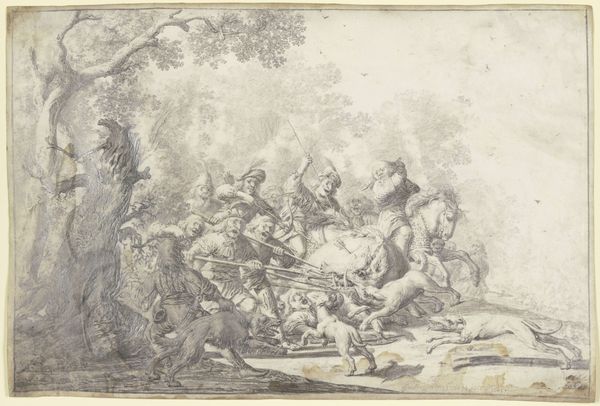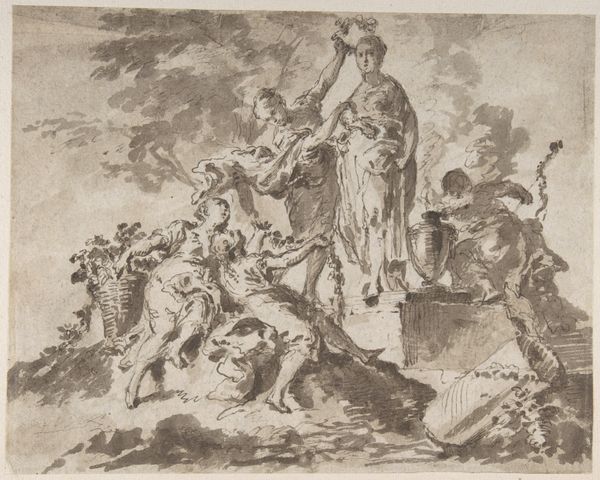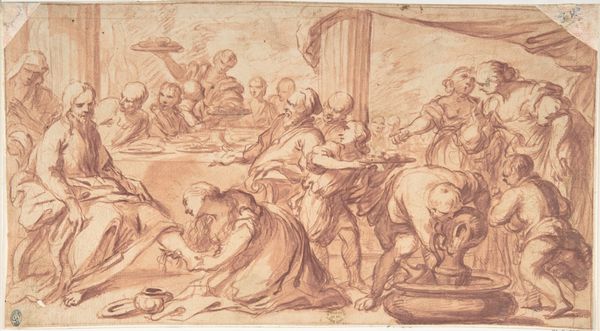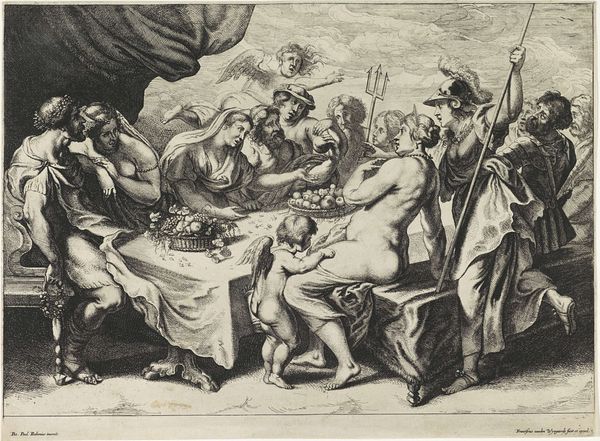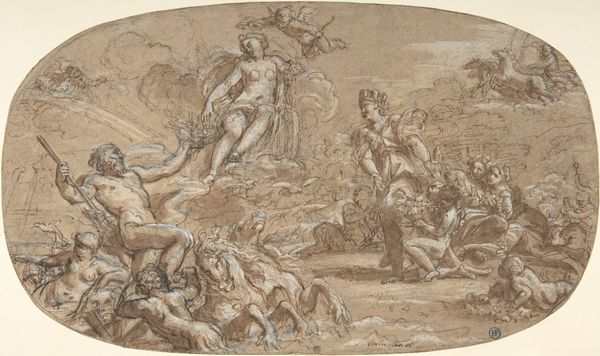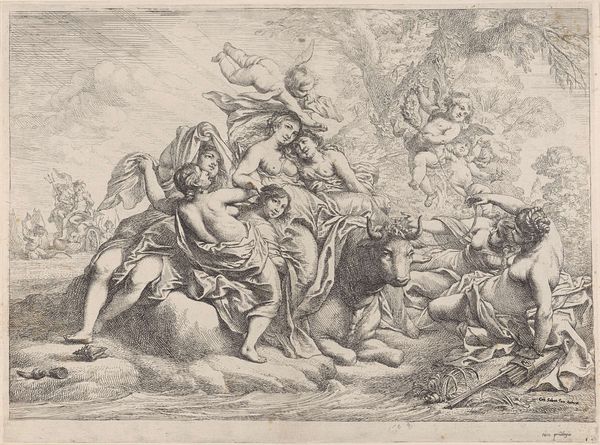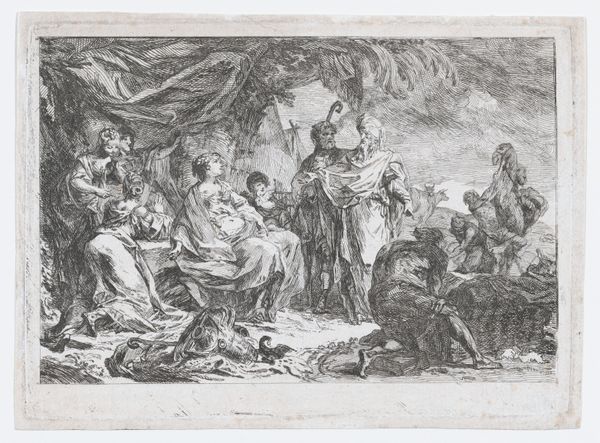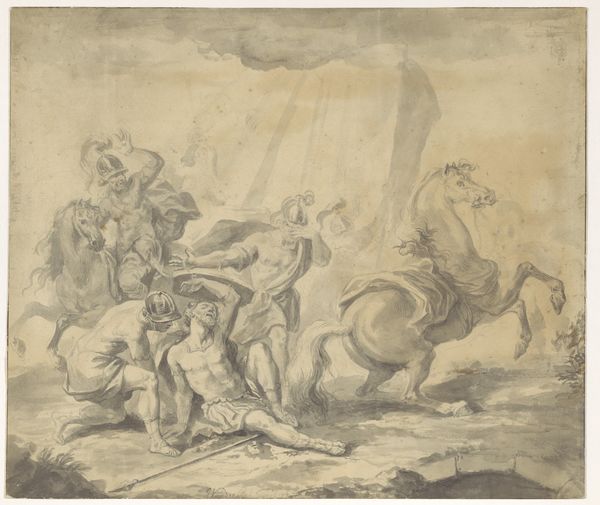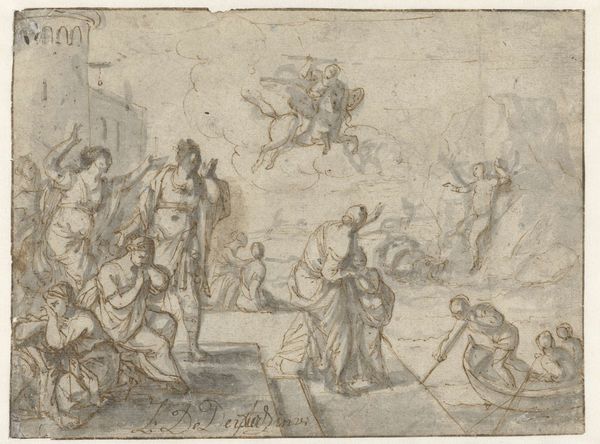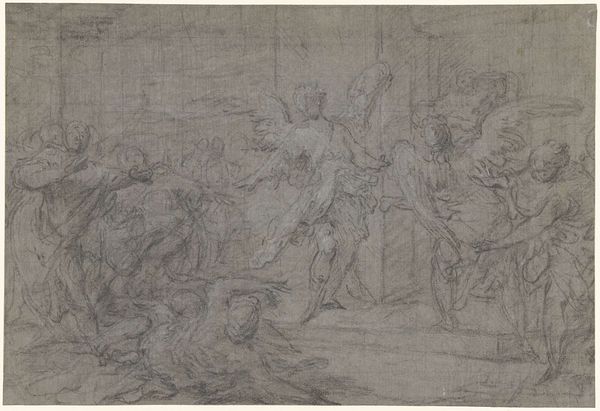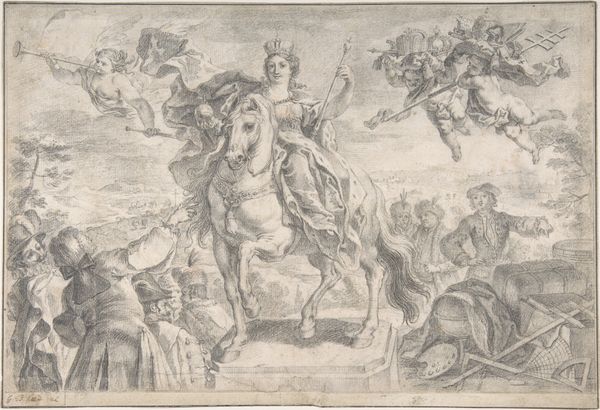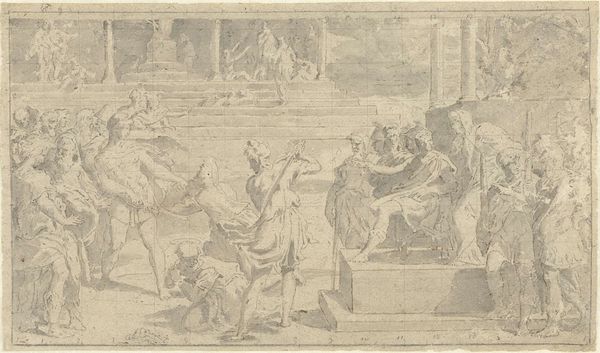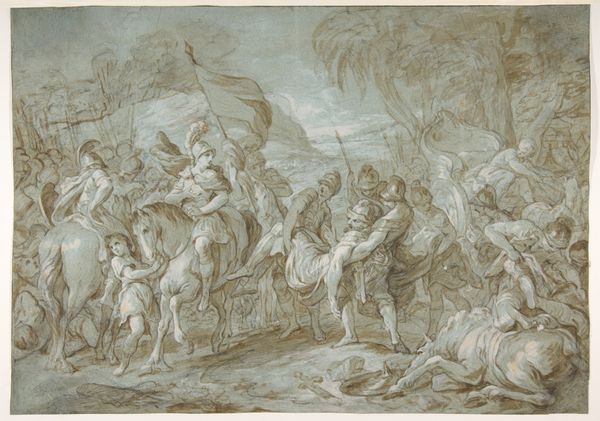
drawing, ink, pen
#
drawing
#
narrative-art
#
ink painting
#
charcoal drawing
#
mannerism
#
figuration
#
ink
#
pencil drawing
#
pen
#
genre-painting
#
watercolor
Dimensions: height 251 mm, width 366 mm
Copyright: Rijks Museum: Open Domain
Curator: My first thought is—drama! All these figures crowded together around the well, gestures flying. What strikes you about it? Editor: A dynamic tension, actually. You have this biblical scene rendered with an almost casual fluidity. The loose washes of ink suggest movement, yet there's a theatrical quality to the poses that freezes the narrative in time. Chrispijn van den Broeck made this drawing, "Moses Defending the Daughters of Jethro," sometime between 1534 and 1591. It resides here at the Rijksmuseum, awaiting our contemplation. Curator: Ah, yes. Jethro's daughters, beset upon! It’s more than a snapshot of chivalry though, right? Broeck wasn’t just illustrating a story. The muscularity of the figures and their convoluted postures absolutely scream Mannerism. Look how exaggerated that crouching woman's back is! Is she trying to steal the show or fetch water? Editor: Precisely. Mannerism, with its emphasis on artifice and emotional intensity. But let's dig deeper into the story. Moses, an outsider, intercedes on behalf of these women against patriarchal aggression. This act of defiance, captured in ink, resonates even today. Who gets to draw water, access resources, tell their story? Curator: See, I was stuck on the almost grotesque elegance of it all, the way the artist has lovingly shaded the sheep. But your point about access is a sharp one. The drawing, made with pen, ink, and watercolor washes, presents this heroic act—but also the subtle discomfort, perhaps? It’s not a triumphant celebration so much as a charged moment. The women appear to be in distress. Even after their rescue they wear a somber disposition. Editor: Broeck positions Moses not just as a savior, but as a figure challenging the established order. We, as viewers, are invited to consider whose voices are amplified, and whose are suppressed. I wonder how intentional this narrative was during a time of stark social stratification, class warfare, and heavy patriarchal systems of thought. What do you reckon? Curator: You’ve completely changed how I experience this piece. Initially, it was just another exquisite, slightly kooky drawing to me. But I see now it's a tableau brimming with questions about power, intervention, and the lingering complexities even after an apparent victory. Editor: And isn’t that the beauty of art? It lingers, prompting us to wrestle with uncomfortable truths, reminding us that even acts of heroism exist within larger systems of power. Curator: Well said. Let’s leave our listeners to ponder this charged drawing, and maybe refill their own metaphorical water jugs.
Comments
No comments
Be the first to comment and join the conversation on the ultimate creative platform.
